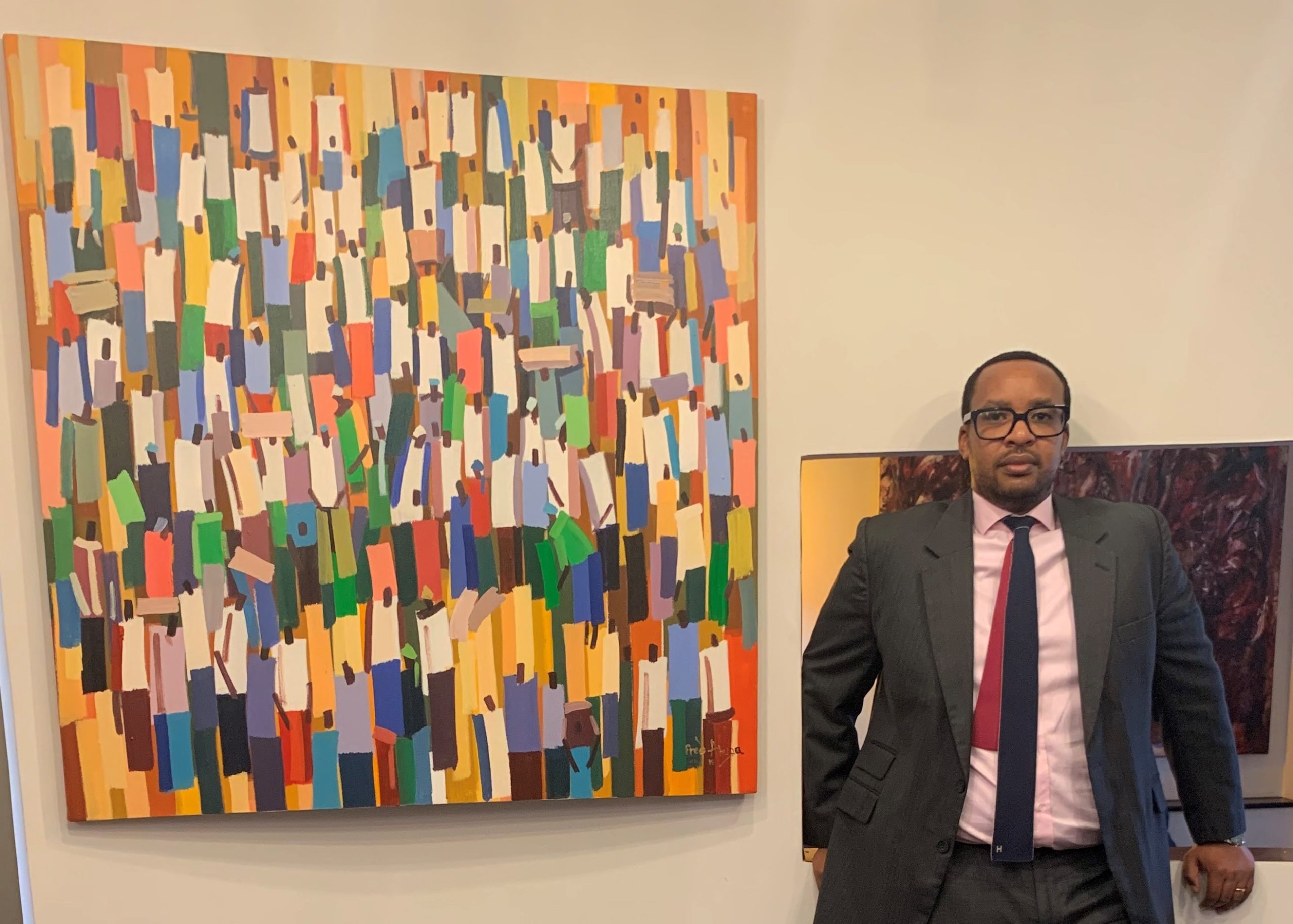 March 10, 2020
March 10, 2020
How Buying East African Contemporary Art is Like Investing In Frontier Equities.
By Muathi Kilonzo, Frontier Equity Sales & Head of Equities Kenya at EFG Hermes
In many ways, being in frontier equity sales is very similar to buying East African contemporary art. Information can be incomplete, artists (or management) hard to trace, prices at times irrational and relationships and trust paramount. On a recent visit to the DRC to see Helios Towers, a firm that we IPOed recently, I asked a gallery for contacts in Kinshasa, which has a vibrant artistic scene and has produced some of the biggest names in African art. However, I soon realised that all the work was in Paris, not in the DRC.
I want to focus on some of the situations that we face on a daily basis in frontier markets.
Firstly, information can be limited – in East Africa, we have a lack of published literature and an absence of national galleries where art is on display. Often, on the sales desk, we have situations where clients want to visit particular countries and see companies where there is no research. With information limited due diligence is done the old school way through a combination of homework, reading the body language of the management, attention to detail and asking locals what they think. Similarly, when looking for a piece of art it is important to speak to artists, and visit their studio to understand their process. Personal relationships with clients are vital, which is the approach we take at EFG: be close to clients, understand their portfolios and preferences.
Secondly, what is a piece worth? Price discovery can be tricky and a purchase come with risks that are not immediately obvious. The established names can command a premium that may at first not make sense, like Vietnam where foreign ownership limits force investors to pay a premium to buy stock. As a team, from sales to trading to research, by visiting the countries or speaking to locals on the ground we get to have a large suppository of information that we use to inform clients. Eventually this knowledge allows them to either discover new opportunities or find the right price for an investment.
Looking for safety manifests itself in a common pattern in frontier markets: investors will look for local subsidiaries of multinationals. Unfortunately, in some markets this has proven to be a troublesome strategy. Conversely, when looking for art it pays to go off-piste and avoid the tourist traps. On the desk, this is a regular conversation: our job is to give clients good ideas and at times in overlooked companies not immediately obvious and help get the information they need to be comfortable.
Thirdly, can you monetize your investment? Is there a secondary market? In frontier markets, liquidity can vary immensely, from the liquid markets such as Bangladesh to the illiquid like Ghana or those with large domestic investors like Morocco. Which can make the entry or exit from an investment either seamless or difficult. In some special situations, clients rely on us to discreetly source or dispose a stock, to do so we cast our net wide and far, relying on experience and knowledge from across the firm. In these types of scenarios, relationships with clients and counterparties both local and foreign are very important.
In my job as frontier equity salesperson, I have found the similarities of looking at East African art and helping clients assess investments and transact on a day-to-day basis striking and complementary.
*Disclaimer: The views of the author are his own and not representative of the company’s official views or investment opinions*
